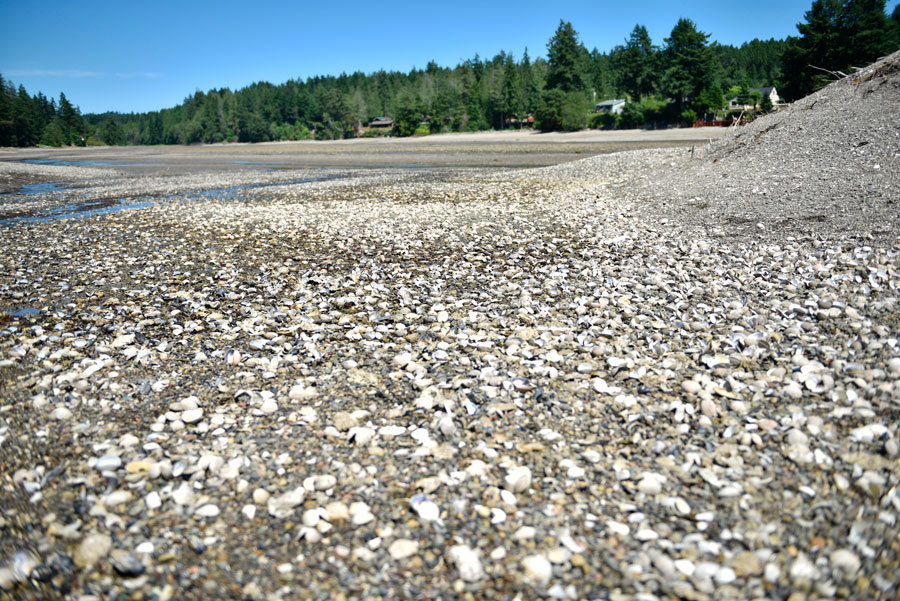
The cause of the Rocky Bay clam die-off in July 2019 has been identified. Beaches across Puget Sound were affected by similar events in both 2018 and 2019. Yessotoxins, produced by the algae species Protoceratium reticulatum, are the culprit.
Teri King, aquaculture and marine water quality specialist with Washington Sea Grant, was lead author of the paper describing the findings. She recalled sinking to her waist on the Rocky Bay beach when it suddenly liquefied as the tide came in when she collected oyster specimens there in the 1980s.
“Mother nature caused me a bunch of grief in that bay and in 2018-2019 she gave it all back by eliminating all the other conditions that could have caused the die-off.”
King suspected phytoplankton but algae had never been identified as the cause of shellfish mortality in Washington. When the toxin levels returned, the researchers had an explanation.
They also delved into data collected as far back as the 1930s by NOAA’s Fisheries Science Center and the National Centers for Coastal Ocean Science and coupled it with recent observations from the SoundToxins (sic) phytoplankton monitoring program, which includes state shellfish managers, environmental learning centers, tribes, residents, and commercial fish and shellfish farmers.
They discovered that two phytoplankton species had historically been associated with shellfish mortality events: the yessotoxin-producing P. reticulatum and a second species, Akashiwo sanguinea, which produces a surfactant and has been associated with mortality in hatcheries and in locations other than Rocky Bay.
“Yessotoxins were only identified in 1986 but since they aren’t a toxin of human health concern they have usually been overlooked,” King said. In the last two years researchers were able to gather samples and study real-time mortality events. “We successfully isolated cysts of P. reticulatum out of the shellfish digestive tract.”
The information, together with a review of historical observations, brought a more complete picture of plankton-induced shellfish summer mortality in focus. King said the final sample analysis was made possible through collaboration with the Northwest Indian College just as the pandemic was shutting things down in 2020.
Vera Trainer, research oceanographer at the Northwest Fisheries Science Center in Seattle, founded SoundToxins 15 years ago.
“I call it a neighborhood block watch for the seas,” Trainer said. “This is one of the good news stories. The science is moving out of the glass towers and into the community. It is an example of a community-based science program, working together and having these eyes on Puget Sound. These questions are difficult, and we need more people working together.”
King said the next step will be to survey bivalves throughout Puget Sound to quantify yessotoxin concentrations in a variety of native shellfish over the summer months in collaboration with the Northwest Indian College. Washington Sea Grant will also work with shellfish farmers and toxicologists from the University of Washington to develop dose response curves as they relate to phytoplankton abundances. This should allow them to establish a real-time mapping system to alert managers and growers and possibly allow them to harvest before the bivalves are impacted rather than waiting it out and hoping for survival.
UNDERWRITTEN BY THE FUND FOR NONPROFIT NEWS (NEWSMATCH) AT THE MIAMI FOUNDATION, THE ANGEL GUILD, ADVERTISERS, DONORS AND PEOPLE WHO SUPPORT INDEPENDENT, NONPROFIT LOCAL NEWS